Spike Island, located in Cork Harbour on the south coast of Ireland, has an interesting history. It has been used for various purposes over the centuries, including as a monastery, a military base and as prison. Today, Spike Island is a heritage tourist attraction with visitors from all over the world. It was named top European tourist attraction at the 2017 World Travel Awards. One interesting aspect of the island’s history is the abandoned village located on its shores.
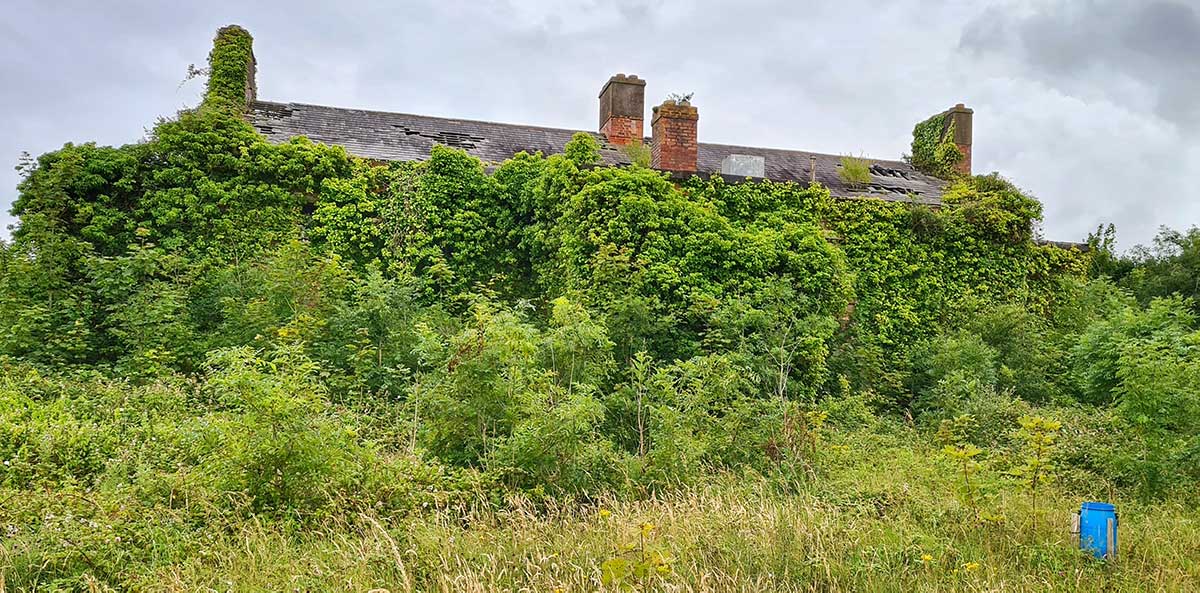
Spike Island has a long and fascinating history that possibly dates back to the 7th century when monks settled there and established a monastery. This information comes from Archdall’s Moanasticon Hibernicum, which states that Saint Mochuada founded the monastery, although there is uncertainty over the location. There is evidence that the Church of Saint Rusien on Spike Island gave a grant to Saint Thomas’s Abbey in Dublin in 1178. This is the first civic account of a religious settlement on the island. It coincides with the surrender of lands, including Spike Island, by Diarmid McCarthy King of Desmond to the Normans.
In 1182, a man named Raymond Mangunel was granted Spike Island and there are no further recorded changes in ownership until 1427. Little is known of the island during this period until the Cromwellian conquest of Ireland which began in 1649. Many were killed at the hands of Cromwell’s forces and tens of thousands of prisoners were taken, most of whom were accused of aiding the rebellion. Most of these were punished with transportation to one of the British colonies to work a term of indentured servitude. Spike Island was used as a temporary transport facility to move the prisoners and it is estimated a total of 50,000 people passed through on their way to Jamaica, Barbados, Montserrat and other islands in the West Indies.
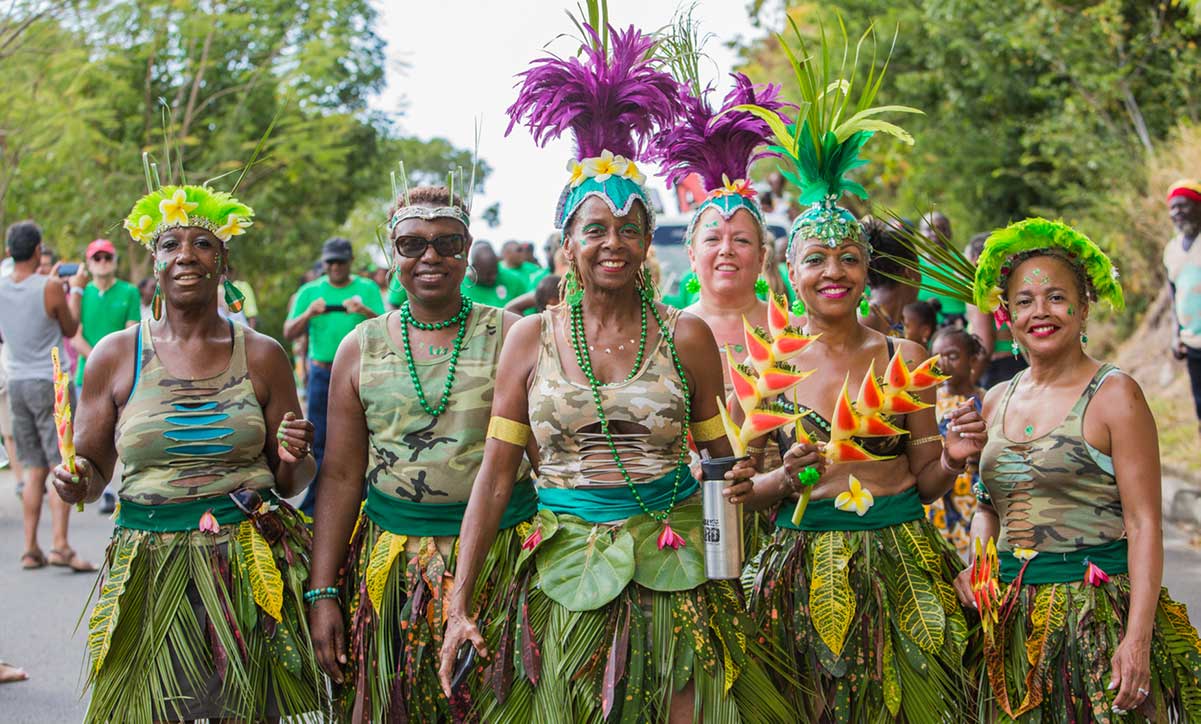
Spike Island returned to private ownership following the restoration of the monarchy and saw little activity until 1770, by which time Spike Island was owned by Nicholas Fitton. The government proposed the island would be suitable for fortifications and eventually part of the island was rented for that purpose. It would be a number of years before construction would begin.
Following the outbreak of the American Revolution in 1775, it was decided to proceed with an artillery fortification on the island. It was seen as a strategic location from which to protect Cork Harbour. The harbour, at this time, was used as an assembly point for convoys to the Americas and at one point, over 400 ships were assembled there. Cork was also important for supplying British forces stationed in the West Indies and North America.
The first British troops arrived at the new fort upon its completion in 1779 and a small island village was built on the north shore to house some of the troops and their families. The population would grow to about 200 people and it would remain as a place to house those working on the island for over 200 years.
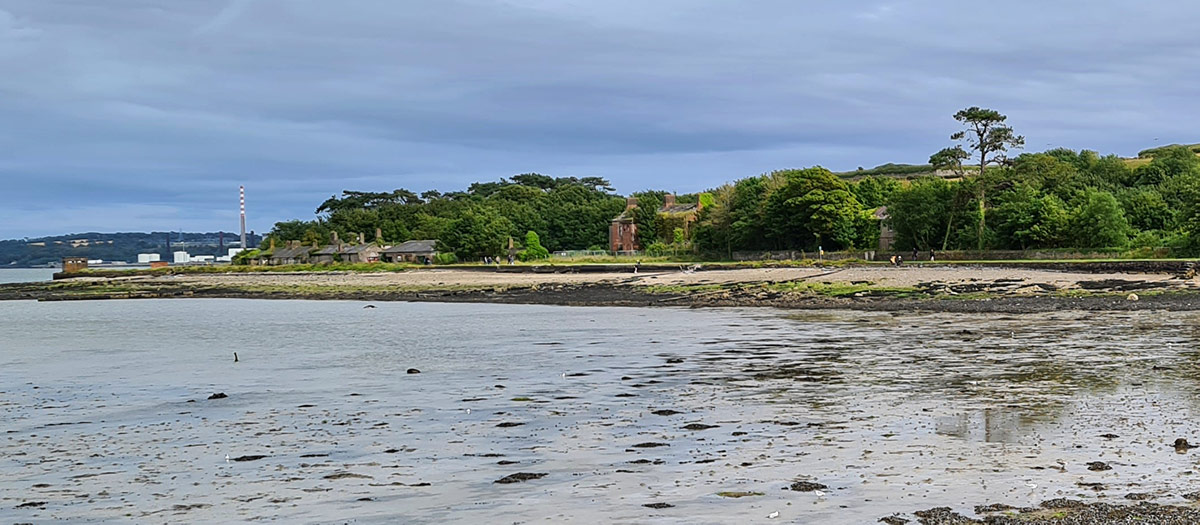
After the Treaty of Paris was signed in 1783 ending the American Revolution, Colonel Charles Vallancey of the Corps of Irish Engineers persuaded the then Lord Lieutenant John Fane, 10th Earl of Westmorland to allow the construction of a permanent fortification on Spike Island. When he visited the incomplete structure in 1790, he christened it Fort Westmorland. In 1794, work was halted by his successor, William Fitzwilliam, 4th Earl Fitzwilliam. Charles Vallancey was adamant that the fort must be finished and permission was finally granted to continue in 1797. It was completed in 1802 and was armed with three 13-inch, two 10-inch, two 8-inch and six 5.5-inch mortars, 29 24-pounder guns, two 12-pounder guns and twelve 6-pounder cannon.
Upon visiting in 1802, General John Hope, 4th Earl of Hopetoun recommended that a major fortress be constructed on Spike Island, capable of holding 2,000-3,000 men. Construction began on the star-shaped fort in 1804, an impressive structure that was one of the biggest of its type in the world upon completion. At 24 acres, it is only slightly smaller than the Pentagon and the whole of Alcatraz Island could fit inside.

In 1845, the Great Famine struck Ireland. Eventually over a million would die and as many as two million would emigrate. Those who were starving were often forced into desperate acts to stay alive and crime increased dramatically. The prison authorities were overwhelmed by spiralling numbers and solutions were sought to hold prisoners. One suggestion was the unfinished Spike Island where prisoners could be housed in the already completed accommodation blocks while working to complete the fort. It was envisaged that 800 convicts would be held on Spike Island but soon, there were 2,300 prisoners. This was half of all prisoners in Ireland and it made Spike Island not only the biggest prison in the British Empire, but in the entire world.
The conditions for the prisoners in Spike Island at this time were horrific. No women were held on the island, just men and boys, some as young as 12. 10% of the prisoners who were held on Spike Island, as many as 1,000, would die during its first six years of operation. Many were buried in two mass graves on the island. After the famine, the population of the prison declined and by 1883, it was closed and reverted to military use.
During World War I, Spike Island was used as training camp for those going to the front and trenches were dug across the island to this purpose. Because of the strategic importance of Cork Harbour and the transatlantic port of Queenstown (now Cobh), Spike Island was a vital part of the British defences.

By 1919, the Irish War of Independence had broken out. The Irish were heavily outnumbered but their hit and run tactics worked and the British were forced into signing the Anglo-Irish treaty. During this period, Spike Island served as an internment camp with 1,400 Irish War of Independence prisoners held there. It then held anti-treaty forces during the Irish Civil War.
The Irish Free State came into being on 6 December 1922 however the Treaty included provisions by which the British would retain sovereignty over three strategically important ports known as the Treaty Ports. These were Queenstown (including Spike Island), Berehaven and Lough Swilly. The ports had been important naval bases during World War I and the British government wanted to keep them as a means of securing their strategic interests in the North Atlantic. Spike Island and the Treaty Ports remained under British sovereignty until 11 July 1938 when the territory was ceded to Ireland.
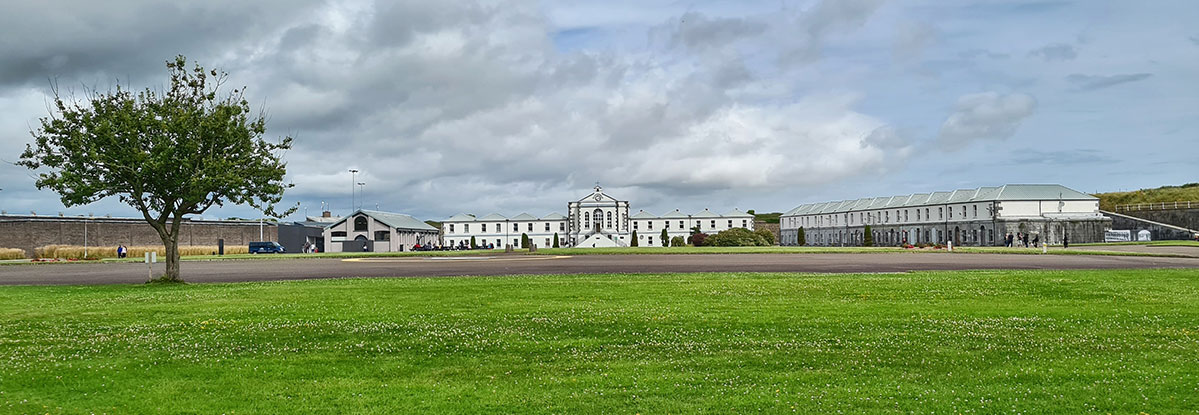
Following the handover to Ireland, the fort on the island was renamed Fort Mitchel after John Mitchel, a nationalist writer and activist who had been held on the island during the famine before being transported to Bermuda and later Van Diemen’s Land in Australia. It continued to serve as a naval base until the 1980’s.
On 29 March 1985, the Department of Defence handed over control of the fort to the Department of Justice for use as a youth correctional facility. Conditions were harsh and the former naval accommodation was unsuitable for use as a prison. The punishment block was especially harsh, given that it was used previously to hold prisoners during the famine.
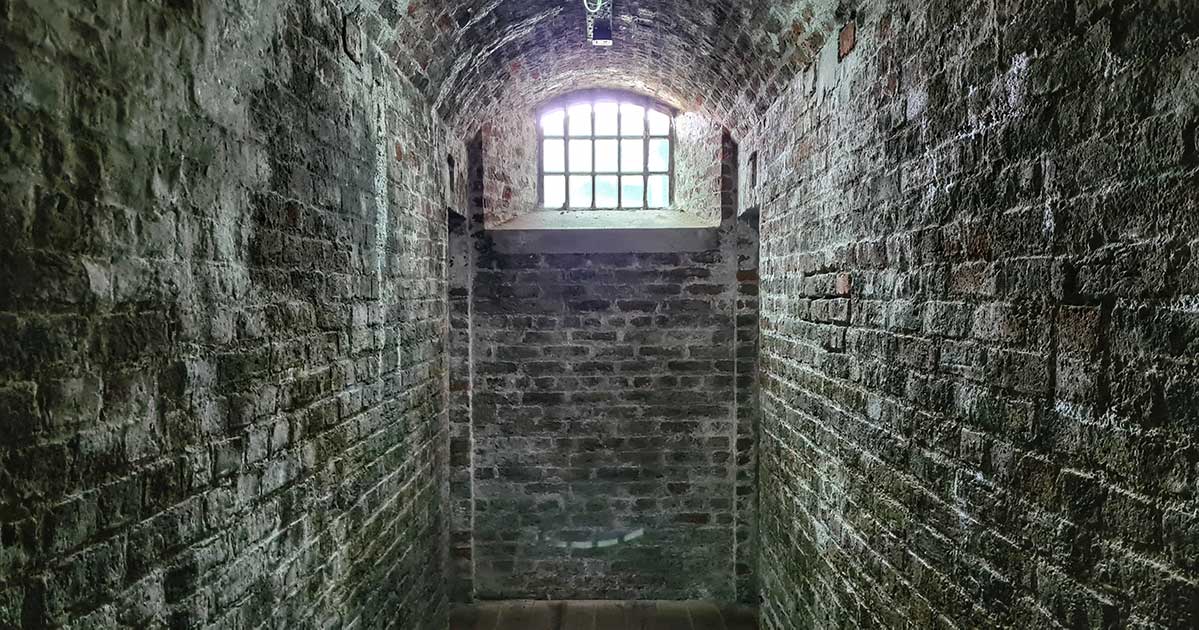
On the night of 31 August 1985, a riot broke out in A Block. The prison guards were overpowered and fled. They managed to get to a boat and get off the island as the prisoners took control of the fort. The residents of the village on the island found themselves trapped but negotiated passage off the island with the rioting inmates. They took to the roof of the building and set fires. A Block and part of B Block were destroyed by fire.

The prison guards returned with reinforcements and the prisoners surrendered. The army had been called in but were turned away as the situation was de-escalating and it was feared their presence would lead to a flaring up of the violence again. Following the riot, the north-west casements were converted into more suitable 4 man prison cells and Spike Island continued as a prison until February 2004 before finally being closed.

The riot also had a significant impact in the village on Spike Island. After the families were evacuated to Cobh, it was decided they shouldn’t return to the island and homes were purchased for them in the local area. The riot ended over 200 years of continuous island occupation by civilians and the village was left abandoned. What was once a bustling community that was home to the families of the prison guards and other workers on the island has been left to decay.
Some still standing and others reduced to little more than piles of rubble. Despite the damage inflicted by time and weather, the houses are still recognisable as the homes they once were, with some retaining their distinctive front doors, windows and chimneys. One of the most striking features of the abandoned village is the schoolhouse, which still has its blackboard and other classroom fixtures in place. The chapel, which once served the spiritual needs of the villagers, is also still standing, although it is now little more than a shell.
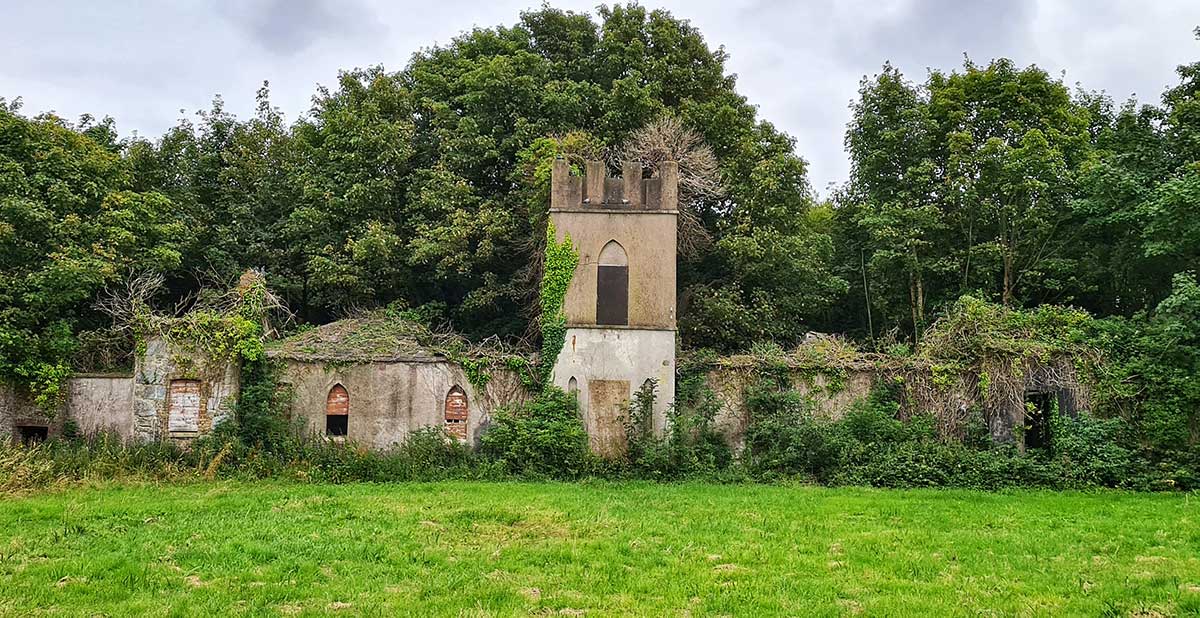
The abandoned village on Spike Island is a haunting reminder of the island’s rich and varied history. As visitors explore the ruins of the houses and other buildings, they can imagine what life was like for the villagers who once called this place home. In recent years, there have been plans to restore the abandoned village on Spike Island and turn it into a heritage centre, although these plans have yet to be realised.
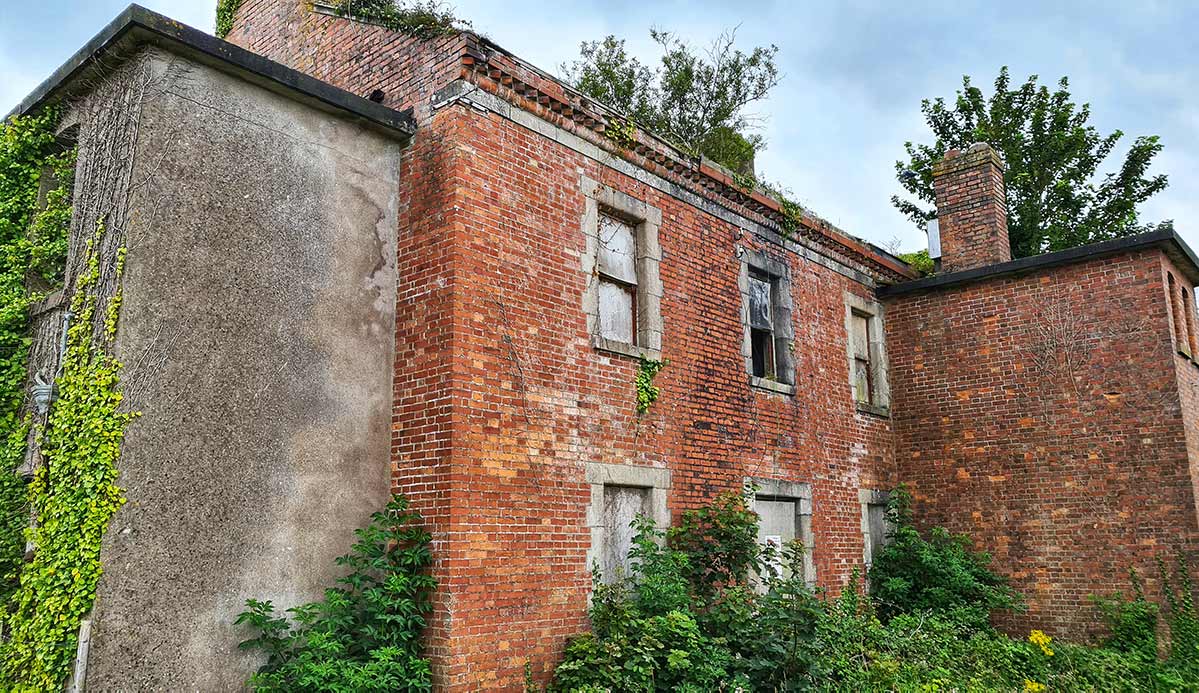
When the prison closed in 2004, the Department of Justice had been drawing up plans to build a new prison on the island however they decided against it. In 2010, the island was handed over to Cork County Council who spent millions preparing it as a tourist attraction. Spike Island opened to the public in 2016.
Today, visitors can explore the 104 acre island including Fort Mitchel which has exhibits telling the story of the island through the centuries. You can also visit the convict cemetery and the abandoned village.
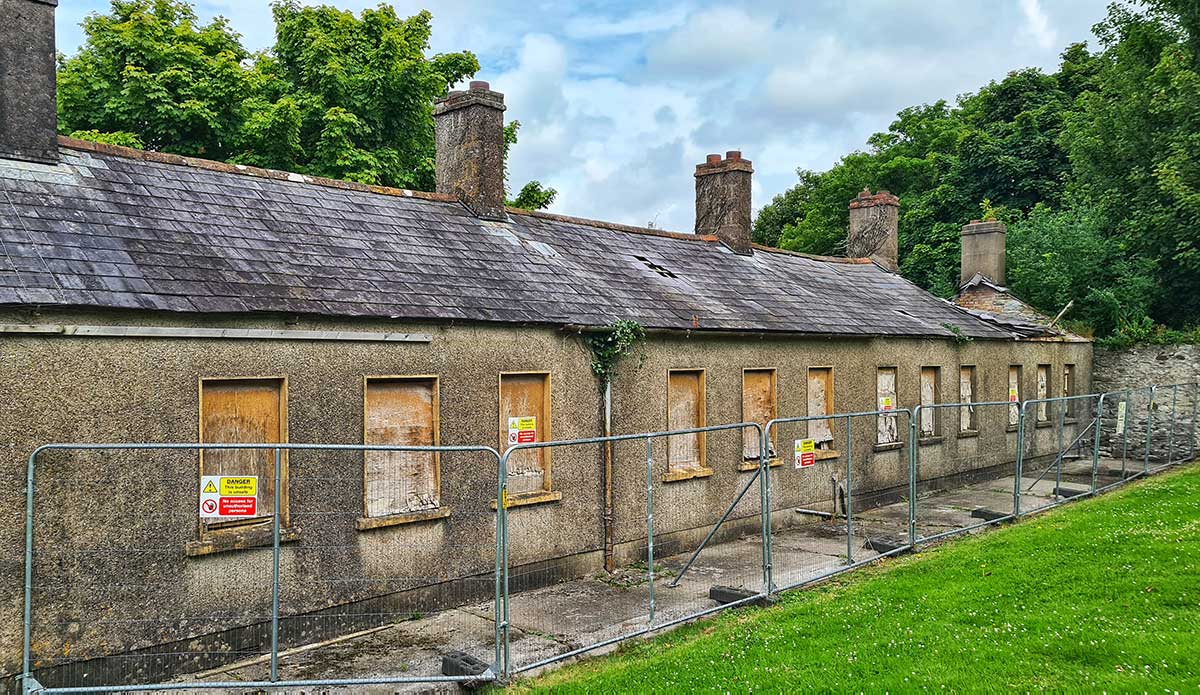
Overall, Spike Island offers a fascinating glimpse into the history of Ireland, from its military past to its more recent struggles for independence and social justice. The island is a unique and educational destination for tourists who are interested in Irish history and culture.


Pingback: The Abandoned Old Red Iron Bridge in Waterford, Ireland